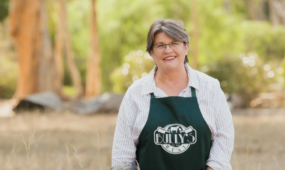Pop-up villages to shelter refugees
Ideas
PORTABLE emergency shelter villages from Australia will provide safe, good quality accommodation for thousands of refugees worldwide.

Sign up to receive notifications about new stories in this category.
Thank you for subscribing to story notifications.
Almost 60 million people were forced to leave their homes in 2015 with 20 million recognised as refugees.
South Australian company Humanihut Pty Ltd has designed a compact and cost efficient housing system that will help disaster relief agencies shelter the increasing population of refugees.
Managing Director Neale Sutton said each system was highly portable and consisted of 16 separate Humanihuts that were all able to fit in a single standard shipping container.
He said Humanihut was actively pursuing markets in the Middle East and Europe and planned to deploy the shelter system before the Northern Hemisphere winter later this year.
“The Humanihut system is like a village. If you extrapolate the process of erecting 16 Humanihuts, which will only take around a couple hours, configuring the shower block and setting up a few more of them nearby, you can shelter about 2500 people,” he said.
“Water purification, power and sewage will also be delivered in the container.
“There is a real need for this type of thing. Some camps are hosting a couple thousand people and one in Jordan, at its peak, had about 250,000.”
Each Humanihut is 7.3m long, 2.4m high and can be folded down to 300mm to fit in the shipping containers.
The walls are steel skinned with an insulated panel that enables each hut to repel heat and cold, helping the shelter to maintain a comfortable temperature.
The company was recently named in Tallt Ventures’ Disrupt 100 list, which recognises companies with high potential to change or create new global markets.
The index was sourced from more than one million global start-ups and was judged by global brands including KPMG, IBM, and Silicon Valley Bank.
“I came up with the idea while talking with my partner and co-founder Andrew Hamilton about Syria in early 2013. There were thousands of refugees fleeing the country and heading to the Jordan border and we thought about what we could do,” Sutton said.
“Each Humanihut has fresh water to ensure it’s safe for everyone because at the moment water is delivered from a community well. By providing clean water and shelter, the Humanihut helps prevent health problems like malaria that kill thousands of refugees every year.
“The Humanihut Shelter System breaks even with the cost of tents at the three-and-a-half year mark and in the fifth full year, based on a camp of 50,000 people, it would save the camp managers approximately USD $70m per year because they are no longer buying replacement shelters as they wear out.”
Humanihuts
There are about 5 million Syrian refugees who have been displaced since the civil war began in 2011. About half of them are children.
Sutton said the Humanihut concept was the first refugee placement product of its kind. He said the company was also working on other uses for the huts.
“The products aren’t just for the refugee market. We can provide small Humanihut houses for people whose houses have burnt down in bushfires,” Sutton said.
“We can also provide a camp for the construction and mining industries as well.”
Tim O’Connor from the Australian Refugee Council said the Humanihut system could be a highly sought after product because of its ability to deploy in an efficient and prompt manner.
“Humanihut shows incredible innovation from an Australian company. It is dealing with one of the greatest displacements in human history since the Second World War,” he said.
“With about 20 million refugees and the majority struggling to find appropriate shelter, it’s an excellent invention in that regard. Delivering relatively low cost, reliable, solid shelters for people who really need it.”
The final cost of the system is yet to be finalised but manufacturing will begin in July.
Jump to next article



